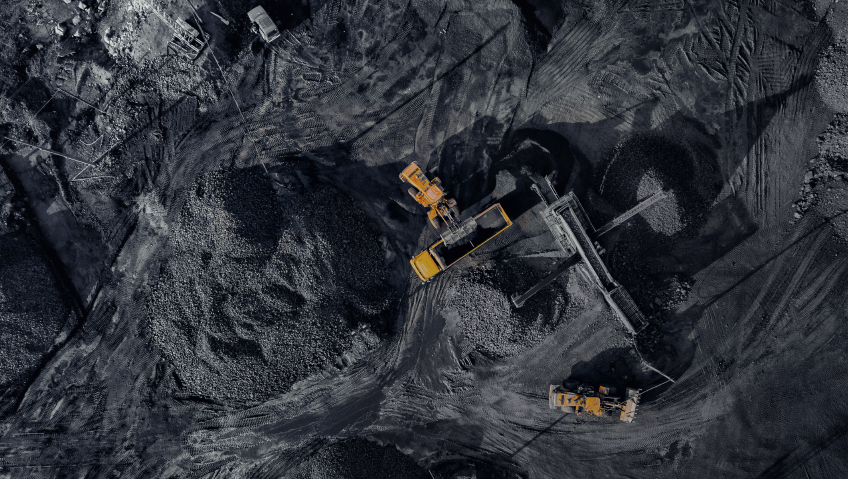Companies that adopt sustainability initiatives are everywhere, from small mom-and-pop companies to multinational manufacturers. Green practices are no longer limited to environmental groups or a handful of sectors and exist today in virtually every industry – and mining is no exception.
For years, we have heard about the impact mining takes on the environment and on human health, from contaminating soil and groundwater to erosion, deforestation, and air pollution. These issues and others are being mitigated as mining methods become more technologically advanced and environmental rules and regulations grow increasingly strict.
Under increased scrutiny from governments, environmental groups, and the public, mining operations worldwide are changing the social and environmental perception of the industry, while remaining economically feasible.
Like other industries – construction, for example – there is significant pressure to keep costs low, optimize productivity, use less fossil fuel, and reduce carbon monoxide emissions. One of the many ways in which mining companies are reducing their environmental impact is by moving away from diesel-powered to electric vehicles.
Manufacturers like Finland-based technology company Normet are making it possible for the world to move “into digitalised and sustainable underground mining and tunnelling,” through purpose-built electric vehicles, according to the company which has delivered over 12,000 of its underground machines to date.
Coming on the heels of growth of consumer electric vehicles in recent years, battery electric vehicles (BEVs for short) represent a considerable but worthwhile investment for mining companies, people, wildlife, and the future. Compared to their diesel-powered counterparts, BEVs, with their long-lasting, industrial-quality, lithium-Ion batteries, use far less energy and produce fewer emissions than traditional mining and tunnelling machinery. Electric vehicles are particularly useful for underground applications where they hold huge health advantages for mine workers as diesel emissions are a known carcinogen.
Serving as the voice of Canada’s mining industry for the past eighty-five years, The Mining Association of Canada (MAC) is focused on advocacy, Aboriginal affairs, corporate social responsibility, and other key issues. Among its commitments is ‘Towards Sustainable Mining’ (TSM), launched in 2004. TSM’s guiding principles are mandatory for the association’s member companies.
These rules for responsible mining include “engaging with communities, driving world-leading environmental practices,” and “committing to the safety and health of employees and surrounding communities.”
TSM is overseen by an independent advisory panel to be accountable and transparent. This is the only program in the world to conduct assessments “at the facility level where the mining activity takes place,” according to MAC. Mining companies must publicly report the performance of their facilities, with results externally verified every three years.
Towards Sustainable Mining addresses areas like community outreach, safety and health, tailings management, the prevention of child and forced labour, energy use and greenhouse gas (GHG) emissions management, water stewardship and more. Towards Sustainable Mining is positively affecting mining companies in Canada and around the globe. Other associations have adopted TSM, including the Finnish Mining Association, the Botswana Chamber of Mines, CONFEDEM (the national mining association of Spain). In a release last year, the Government of Canada praised this standard for sustainable mining.
Quoted in the release was trade commissioner Carlos Miranda, the TCS liaison officer for mining and embedded within MAC. “TSM is becoming a de facto standard, and we’re proud of that. It’s good for business and good for corporate social responsibility, and it also increases knowledge, transparency and openness within local communities,” Miranda stated. “Canada is not perfect, but we’re getting better, and it can be argued that Canadians are leading the world in CSR [corporate social responsibility] in this sector.”
Although interest in sustainable mining practices has increased in recent years, the concept of mining and sustainable development goes back decades. In 1987, the World Commission on Environment and Development referred to it as “development that meets the needs of the present without compromising the ability of future generations to meet their own needs.”
The Mining Association of Canada is far from alone in advocating for improved mining methods. In April 2018, the United Nations issued a sourcebook titled Managing Mining for Sustainable Development which outlined the importance of minerals and metals for today’s society to function. The sourcebook addresses the importance of mine site management, including environmental impacts, sustainability, and social implications.
Mining is evolving to keep up with the times but like in other sectors, it is unrealistic to expect overnight changes. While electric vehicles address technological issues, other concerns are more fundamental. Mines are known for consuming vast quantities of water – fast becoming one of the planet’s scarcest resources – and the pressure on mines to use less water and pollute less is tremendous.
Some mining giants, like Anglo-Australian multinational Rio Tinto, have significantly reduced water use by capturing and recycling water. And Condorchem Envitech, with technologies for air treatment, waste recovery, and zero liquid discharge, also designs and installs wastewater treatment plants. By making mining wastewater reusable by recovering water through crystallization and vacuum evaporation, the company eliminates expensive disposal and keeps water use very low, making mine site operations less expensive.
Mining companies, governments, and related groups around the world are moving towards practices that are better for workers and the environment by doing things from using less water to using low-polluting electric vehicles, reducing dust and transforming millions of acres of mines land worldwide into parks and wildlife reserves. Mining companies are proudly affirming their place as corporate citizens, and implementing new technologies and practices that use fewer resources also benefits shareholders.
Companies throughout this multi-billion-dollar industry are re-examining their operations and taking advantage of the latest technologies, incentives (including carbon tax credits in some cases), and overall increased efficiencies. Investing in new technologies will continue to benefit mining companies and the planet in the years to come.













